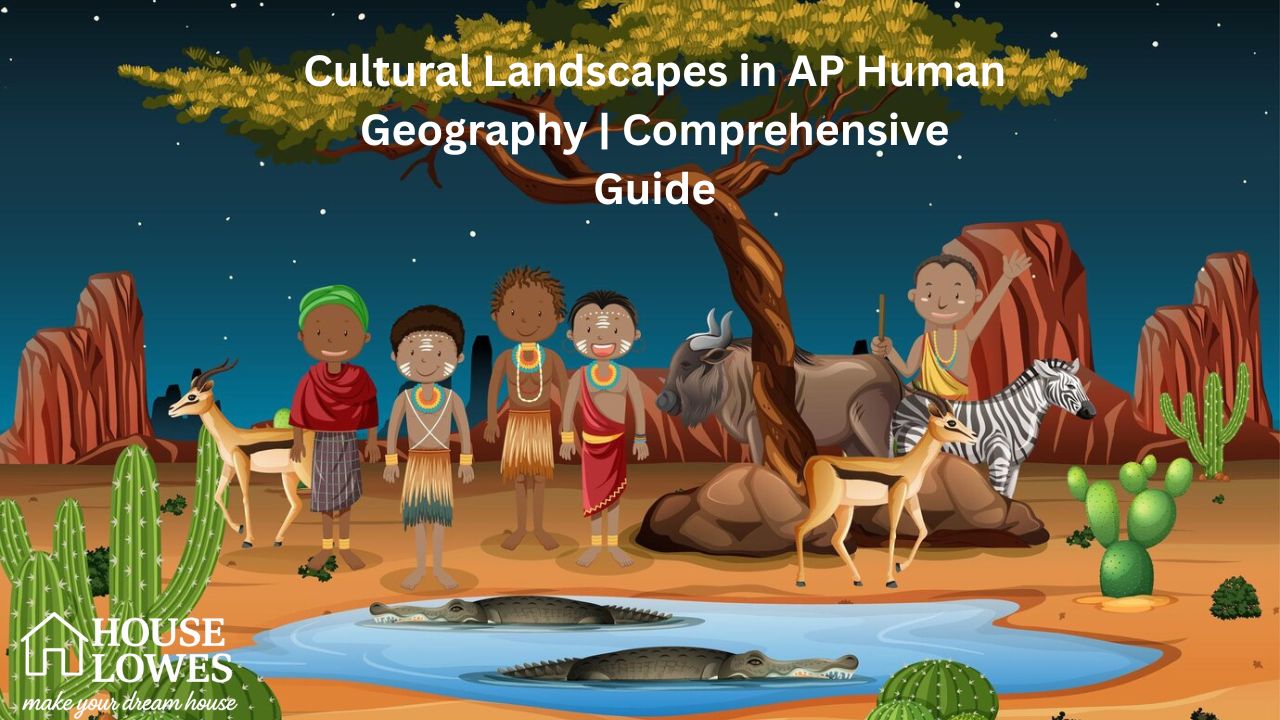Imagine standing in a bustling city. The tall buildings reach for the sky, cars zoom past you, and people from all walks of life scurry along the sidewalks. Now, think about a quiet village surrounded by vast green fields, with charming houses and narrow winding roads. These places look and feel so different, don’t they? That’s because they’re shaped by the cultural landscape in AP Human Geography! But what exactly does that mean?
A cultural landscape is like the fingerprint of a place. It’s the way humans have altered and added to the natural world around them. From your neighborhood park to a famous historical landmark, these places are shaped by the people who live there, their traditions, and their daily habits. Think of it as nature dressed up by humanity!

Let’s Break It Down
- Cultural refers to the unique customs, beliefs, and activities of people.
- Landscape is the visible scenery or physical features of a place, like mountains, rivers, or buildings.
Put them together, and you get something truly amazing! A cultural landscape shows how we, as humans, leave our mark on our surroundings.
Why Cultural Landscapes Matter
Cultural landscapes aren’t just pretty to look at; they tell stories. These stories are about who we are, where we come from, and how we interact with the natural world. Want to know about the history of a city? Look at its buildings. Curious about a country’s beliefs? Visit its temples, mosques, or churches. These landscapes are living, breathing history books.
For instance, consider toponyms, which are place names. Have you noticed some places are named after people, events, or even feelings? Santa Barbara, for example, reflects its Spanish origins and cultural identity. Pretty cool, right?
The Human Touch
Humans have an impressive ability to adapt to their environment, and this is where the concept of human imprint comes in. Simply put, it’s the way people shape the land around them. From constructing bridges to planting crops, this mix of natural and man-made elements creates a cultural landscape.
Think about something as simple as a park. Once upon a time, it might have been a wild forest or an open meadow. But today, it’s a place where families picnic, kids play, and joggers run. People added benches, play equipment, and walking paths. Voila! A cultural landscape in action.
Real Examples You’ll Love
Want an example to wrap your head around? How about Stonehenge in England? It’s not just a random stack of rocks. It’s a symbolic landscape that reflects the lives, beliefs, and ingenuity of ancient people. On the other hand, a modern shopping mall might reflect consumer culture and today’s fast-paced lifestyles.
Imagine cities like New York, where soaring skyscrapers embody ambition and innovation. Or Kyoto, where you’ll find centuries-old temples surrounded by cherry blossoms. Each reflects adaptive strategies, proof of how humans fit into their environment.
FAQs About Cultural Landscapes
What makes something a cultural landscape?
A cultural landscape is made up of both natural features (like rivers and mountains) and human-made elements (like buildings and roads). It’s essentially the result of humans interacting with their environment.
Can cultural landscapes change?
Absolutely! A cultural landscape isn’t static. Over time, people’s habits, technology, and beliefs can transform a place. This process is referred to as sequent occupancy. For example, a city that once housed colonial buildings might now have a mix of modern skyscrapers and historic architecture.
Why do cultural landscapes matter in AP Human Geography?
Cultural landscapes help students connect theoretical knowledge to real-life examples. They show how humans and their surroundings influence each other, a key part of understanding themes in geography.
Nature Meets Culture
One fascinating concept tied to cultural landscapes is cultural ecology, which looks at how the natural environment influences human culture and vice versa. Ever noticed how people in colder climates might build houses with steep roofs to prevent snow buildup, while those in tropical regions prefer open spaces and ventilation? That’s cultural ecology in action.
Everyday Examples You Might Recognize
- Neighborhood Parks are great examples of cultural landscapes. One that has playgrounds, jogging tracks, and picnic tables reflects a community’s lifestyle and values.
- Downtown Plazas might show off historical statues, fountains, and even modern art pieces that reflect both local history and innovation.
A Quick Peek At “Regions”
Cultural landscapes also tie closely to the idea of regions. Geographers often talk about formal regions (areas defined by common characteristics), functional regions (areas organized around a central hub, like a city), or perceptual regions (areas shaped by people’s perceptions, like “the South”). Every region contributes its own twist, shaping cultural landscapes all over the world.
Example
Consider the Bible Belt in the United States. Many communities in this region have churches as central landmarks, reflecting the area’s strong religious traditions.
The Fun Part – Spotting Landscapes
Now that you know what cultural landscapes are, how about taking a closer look around you? Your local cafe, a nearby museum, or even the way houses line the streets all say something about the people who live there.
For example, urban landscapes, like those in bustling cities, show how humans prioritize functionality and space efficiency. Compare that to rural landscapes, where there’s more focus on nature and agricultural use. Both are fascinating in their own way!
Wrapping It Up
Cultural landscapes are more than just scenery; they’re the stories humans tell about themselves. They reflect beliefs, traditions, and lifestyles, showing how we adapt to and shape the world around us.
By understanding cultural landscapes, especially in AP Human Geography, you’ll gain a whole new perspective on how people interact with their environment and each other. And the best part? You don’t need an encyclopedia of facts. Just look around, explore, and be curious.
Structured Data Example
Use example schema attributes like Educational Organization, Subject, and Place to enrich content metadata for better SEO optimization. Ensure primary terms like “AP Human Geography” and “cultural landscapes” are tagged for search suitability.
Stay tuned for the next section, where we’ll explore specific examples of global cultural landscapes and how they put all these concepts into action!







